 W
WThe Akutan Zero, also known as Koga's Zero and the Aleutian Zero, was a type 0 model 21 Mitsubishi A6M Zero Japanese fighter aircraft that crash-landed on Akutan Island, Alaska Territory, during World War II. It was found intact by the Americans in July 1942 and became the first flyable Zero acquired by the United States during the war. It was repaired and flown by American test pilots. As a result of information gained from these tests, American tacticians were able to devise ways to defeat the Zero, which was the Imperial Japanese Navy's primary fighter plane throughout the war.
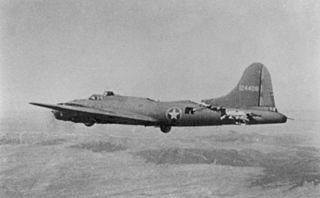 W
WThe All American was a World War II Boeing B-17F Flying Fortress bomber aircraft that was able to return safely to its base after having its rear fuselage nearly cut off by an in-flight collision with a German fighter over enemy-held territory. The bomber's flight is said to have yielded one of the most famous photographs of World War II, and has been linked with the phrase "Comin' in on a Wing and a Prayer." It inspired the 414th Bombardment Squadron's emblem, an image of a puppy praying atop an aircraft's tail section.
 W
WAluminum Overcast, B-17G-105-VE, s/n 44-85740, civil registration N5017N, is one of only nine presently airworthy Boeing B-17 Flying Fortresses of the 48 complete surviving airframes in existence. It never saw combat, and it escaped the fate of many aircraft that were scrapped after World War II. It is owned by the Experimental Aircraft Association (EAA), and, as of 2019, it is still touring the United States and Canada offering flight experiences.
 W
WThe Atka B-24D Liberator is a derelict bomber on Atka Island in the Aleutian Islands of Alaska. The Consolidated B-24D Liberator was deliberately crash-landed on the island on 9 December 1942, and is one of only eight surviving D-model Liberators. The aircraft, serial no. 40-2367, was built in 1941, and was serving on weather reconnaissance duty when it was prevented from landing at any nearby airfields due to poor weather conditions. The only casualty of the crash landing was Brigadier General William E. Lynd, who suffered a fractured collarbone.
 W
WB-17G-95-DL "Flying Fortress" No. 44-83690 is a historic B-17 Flying Fortress Heavy bomber located at the Museum of Aviation, Robins Airforce Base in Georgia undergoing restoration. It was built by the Douglas Aircraft Company and delivered for use on May 9, 1945. It was flown to Grissom Air Force Base for display as a museum piece in 1961, and subsequently restored.
 W
WBataan 1 and Bataan 2 were two demilitarized Japanese bomber/transport aircraft that carried the first surrender delegations from Japan to Ie Shima as part of the surrender of Japan in World War II. The two aircraft, specifically a Mitsubishi G6M1-L2 military transport and a second, disarmed and repaired Mitsubishi G4M1 bomber, carried eight members of the delegation team, which included General Torashirō Kawabe, representing Army Chief of Staff Yoshijirō Umezu who refused to participate. They departed from Kisarazu, near Chiba at 7:18 Japanese time on August 19, touching down on Ie Shima the same day.
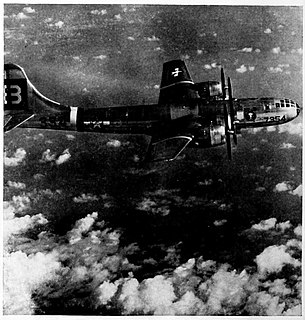 W
WBig Stink – later renamed Dave's Dream – was a United States Army Air Forces Boeing B-29-40-MO Superfortress bomber that participated in the atomic bomb attack on Nagasaki, Japan on August 9, 1945. Assigned to the 393d Bomb Squadron, 509th Composite Group, it was used as a camera plane in support of the bomb-carrying B-29 Bockscar to photograph the explosion and effects of the bomb, and also to carry scientific observers. The mission was flown by crew C-14 but with Group Operations Officer Major James I. Hopkins, Jr., as the aircraft commander.
 W
WBockscar, sometimes called Bock's Car, is the name of the United States Army Air Forces B-29 bomber that dropped a Fat Man nuclear weapon over the Japanese city of Nagasaki during World War II in the second – and last – nuclear attack in history. One of 15 Silverplate B-29s used by the 509th, Bockscar was built at the Glenn L. Martin Aircraft Plant at Bellevue, Nebraska, at what is now Offutt Air Force Base, and delivered to the United States Army Air Forces on 19 March 1945. It was assigned to the 393rd Bombardment Squadron, 509th Composite Group to Wendover Army Air Field, Utah in April.
 W
WChampaign Lady is the name of a Boeing B-17G Flying Fortress being restored at Grimes Field by the Champaign Aviation Museum.
 W
WThe Colditz Cock was a glider built by British prisoners of war for an escape attempt from Oflag IV-C in Germany.
 W
WThe Consolidated XB-41 Liberator was a single Consolidated B-24D Liberator bomber, serial 41-11822, which was modified for the long-range escort role for U.S. Eighth Air Force bombing missions over Europe during World War II.
 W
WDauntless Dotty is the nickname of a Boeing B-29-40-BW Superfortress during the Second World War that led the first B-29 raid on Tokyo on 24 November 1944, the first bombing attack of the Japanese capital since the Doolittle Raid on 18 April 1942.
 W
WDoc is a Boeing B-29 Superfortress. It is one of two that are currently flying in the world, the other B-29 being FIFI. It is owned by Doc's Friends, Inc., a non-profit organization based in Wichita, Kansas, United States.
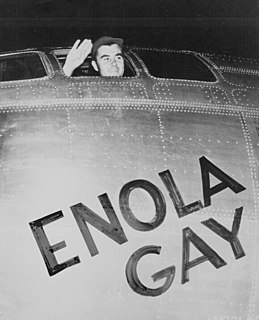 W
WThe Enola Gay is a Boeing B-29 Superfortress bomber, named after Enola Gay Tibbets, the mother of the pilot, Colonel Paul Tibbets. On 6 August 1945, piloted by Tibbets and Robert A. Lewis during the final stages of World War II, it became the first aircraft to drop an atomic bomb. The bomb, code-named "Little Boy", was targeted at the city of Hiroshima, Japan, and caused the near-complete destruction of the city. Enola Gay participated in the second atomic attack as the weather reconnaissance aircraft for the primary target of Kokura. Clouds and drifting smoke resulted in a secondary target, Nagasaki, being bombed instead.
 W
WFIFI is a Boeing B-29 Superfortress. It is one of two B-29s that are currently flying in the world. It is owned by the Commemorative Air Force and is based at the Vintage Flying Museum at Meacham International Airport in Fort Worth, Texas.
 W
WFlak-Bait is a Martin B-26 Marauder aircraft that holds the record within the United States Army Air Forces for the number of bombing missions survived during World War II. Manufactured in Baltimore, Maryland as a B-26B-25-MA, by Martin, it was completed in April 1943 and christened Flak-Bait by its first assigned pilot, James J. Farrell, who adapted the nickname of a family dog, "Flea Bait". Flak-Bait was assigned to the 449th Bombardment Squadron, 322d Bombardment Group stationed in eastern England.
 W
WFull House was the name of a B-29 Superfortress participating in the atomic bomb attack on Hiroshima on August 6, 1945.
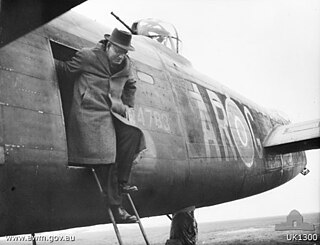 W
WG for George is an Avro Lancaster Mk. I bomber, squadron code AR-G and serial number W4783, operated by No. 460 Squadron RAAF during World War II. It is now preserved at the Australian War Memorial (AWM), Canberra, Australia.
 W
WGlacier Girl is a Lockheed P-38F-1-LO Lightning, World War II fighter plane, 41-7630, c/n 222-5757, that was restored to flying condition after being buried beneath the Greenland Ice Sheet for over 50 years.
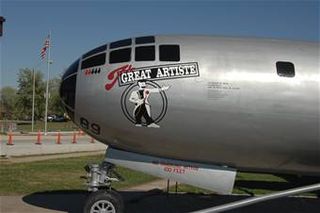 W
WThe Great Artiste was a U.S. Army Air Forces Silverplate B-29 bomber, assigned to the 393d Bomb Squadron, 509th Composite Group. The aircraft was named for its bombardier, Captain Kermit Beahan, in reference to his bombing talents. It flew 12 training and practice missions in which it bombed Japanese-held Pacific islands and dropped pumpkin bombs on targets in Japan. It was the only aircraft to participate in both the bombings of Hiroshima and Nagasaki, albeit as an observation aircraft on each mission.
 W
WPZ865 is a single-engined Second World War Hawker Hurricane fighter operated by the Royal Air Force Battle of Britain Memorial Flight. It was the last of 14,533 Hurricanes produced and is now flown as an airborne memorial.
 W
WHot Stuff is the nickname of a Consolidated B-24 Liberator, 41-23728, of the 8th Air Force that was used in World War II. It was the first heavy bomber in the 8th Air Force to complete twenty-five missions in Europe in World War II and the aircraft which crashed while carrying Lt. Gen. Frank M. Andrews.
 W
WJabit III was the name of a B-29 Superfortress participating in the atomic bomb attack on Hiroshima on August 6, 1945. Assigned to the 393d Bomb Squadron, 509th Composite Group, Jabit III was used as a weather reconnaissance aircraft and flew to the city of Kokura, designated as the secondary target, before the final bombing to determine if conditions were favorable for an attack.
 W
WThe Kee Bird was a United States Army Air Forces Boeing B-29 Superfortress, serial 45-21768, of the 46th Reconnaissance Squadron, that became marooned after making an emergency landing in northwest Greenland during a secret Cold War spying mission on 21 February 1947. While the entire crew was safely evacuated after spending three days in the isolated Arctic tundra, the aircraft itself was left at the landing site. It lay there undisturbed until 1994, when a privately funded mission was launched to repair and return it. During the attempted recovery, a fire broke out, resulting in the destruction and loss of the airframe on the ground.
 W
WLady Be Good is a USAAF B-24D Liberator that disappeared without a trace on its first combat mission during World War II. The plane, which was from 376th Bomb Group, was believed to have been lost—with its nine-man crew—in the Mediterranean Sea while returning to its base in Libya following a bombing raid on Naples on April 4, 1943. However, the wreck was accidentally discovered 710 km (440 mi) inland in the Libyan Desert by an oil exploration team from British Petroleum on November 9, 1958.
 W
WLiberty Belle was a popular moniker with over two dozen known individual Boeing B-17 Flying Fortresses and Consolidated B-24 Liberators using the name in combat during World War II.
 W
WLockheed PV-2 Harpoon, U.S. Navy Bureau Number 37396 , civil registration N7265C, named "Hot Stuff", is located at 3867 N. Aviation Way, Mount Comfort, Indiana. The aircraft, an intact example of a World War II anti-submarine patrol bomber, was added to the National Register of Historic Places on April 23, 2009. It was built in 1945 by the Lockheed Aircraft Corporation, and is one of only 104 built of this PV-2 variant of the Lockheed Ventura. At the time of its listing, it was the only complete, operable example of a PV-2 in the United States, although one was being restored in Wisconsin. While this particular plane did not see combat, the type was used in the Aleutian Islands during World War II. The property was the featured listing in the National Park Service's weekly list of May 1, 2009.
 W
WThe Martin-Baker MB 3 was a British fighter project with six 20 mm cannon. The fatal crash of the prototype led to the cancellation of the programme.
 W
WThe British Martin-Baker MB 5 was the ultimate development of a series of prototype fighter aircraft built during the Second World War. Neither the MB 5 nor its predecessors ever entered production, despite what test pilots described as excellent performance.
 W
WMemphis Belle is a Boeing B-17F Flying Fortress used during the Second World War that inspired the making of two motion pictures: a 1944 documentary film, Memphis Belle: A Story of a Flying Fortress, and a 1990 Hollywood feature film, Memphis Belle. The aircraft was one of the first United States Army Air Forces B-17 heavy bombers to complete 25 combat missions. The aircraft and crew then returned to the United States to sell war bonds. In 2005, restoration began on the aircraft at the National Museum of the United States Air Force at Wright-Patterson AFB in Dayton, Ohio where, from May 2018, it is on display.
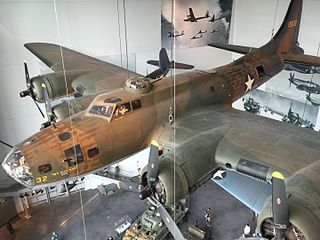 W
WMy Gal Sal is a B-17E-BO Flying Fortress whose pilot was forced to land it on the Greenland icecap during World War II. Many years later, it was recovered and taken to the USA to be restored. It is one of only three intact B-17Es in existence.
 W
WNine-O-Nine was a Boeing B-17G-30-BO Flying Fortress heavy bomber, of the 323rd Bomb Squadron, 91st Bomb Group, that completed 140 combat missions during World War II, believed to be the Eighth Air Force record for most missions, without loss to the crews that flew her. A different B-17G, painted to mimic the Nine-O-Nine, crashed at Bradley International Airport in Windsor Locks, Connecticut in October 2019.
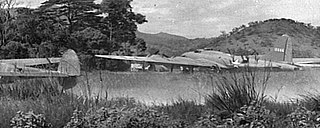 W
WOld 666 was a World War II B-17 Flying Fortress bomber which was assigned to the United States' 19th and 43rd Bomb Groups in 1942–43. It is notable for being the aircraft piloted by Lt. Col. Jay Zeamer on the 16 June 1943 mission that would earn him and 2d Lt. Joseph Sarnoski each a Medal of Honor, and all other members of the crew the Distinguished Service Cross.
 W
WPiccadilly Lilly II was the last active B-17 Flying Fortress bomber in the United States Air Force, and retired in 1959 after nine years as a DB-17P drone director. She is currently part of Edward T. Maloney's aviation collection and is being restored to flying condition at the Planes of Fame air museum, Chino, California.
 W
WThe Pink Lady is the nickname of a B-17G Flying Fortress bomber. Until retirement early in 2010, it was the only flying survivor to have seen action in Europe during World War II.
 W
WSally B is the name of an airworthy 1945-built Boeing B-17G Flying Fortress, it is the only airworthy B-17 left in Europe, as well as one of three B-17s in the United Kingdom. The aircraft is based at the Imperial War Museum Duxford, England, Sally B flies at airshows in the UK and across Europe as well as serving as an airborne memorial to the United States Army Air Forces airmen who lost their lives in the European theatre during World War II.
 W
WSentimental Journey (44-83514) is the nickname of a B-17G Flying Fortress bomber. It is based at the Commemorative Air Force Museum in Mesa, Arizona. The aircraft is regularly flown to airshows throughout North America.
 W
WShoo Shoo Shoo Baby, originally Shoo Shoo Baby, is a Boeing B-17 Flying Fortress in World War II, preserved and currently in storage at the National Museum of the United States Air Force, awaiting transfer to the Smithsonian's National Air and Space Museum. A B-17G-35-BO, serial number 42-32076, and manufactured by Boeing, it was named by her crew for a song of the same name made popular by The Andrews Sisters, the favorite song of its crew chief T/Sgt. Hank Cordes. Photographs of the bomber indicate that a third "Shoo" was added to the name at some point in May 1944 when the original aircraft commander completed his tour of duty and was replaced by another pilot.
 W
WSir Baboon McGoon was an American Boeing B-17 Flying Fortress, a Douglas-Long Beach built B-17F-75-DL, ASN 42-3506, last assigned to the 324th Bombardment Squadron, 91st Bomb Group, 8th Air Force, operating out of RAF Bassingbourn, Cambridgeshire, England. Its nose art and name were based on the male character Baboon McGoon from Al Capp's comic strip, Li'l Abner.
 W
WStraight Flush was the name of a B-29 Superfortress that participated in the atomic bomb attack on Hiroshima on August 6, 1945.
 W
WThe Swamp Ghost is a Boeing B-17E Flying Fortress piloted by Captain Frederick 'Fred' C. Eaton, Jr, that ditched in a swamp on Papua New Guinea during the Second World War, after a raid on ships at Japanese-occupied New Britain on February 23, 1942. While flying over Rabaul, it was intercepted and eventually, having run out of fuel, had to force-land in a remote swamp near the north coast of New Guinea. All of the crew survived the crash landing and arduous trek out.
 W
WThe Swoose is a B-17D-BO Flying Fortress, USAAF Ser. No. 40-3097, that saw extensive use in the Southwest Pacific theatre of World War II and survived to become the oldest B-17 still intact. It is the only early "shark fin" B-17 known to exist, and the only surviving B-17 to have seen action in the 1941–42 Philippines Campaign, operating on the first day of the United States entry into the war.
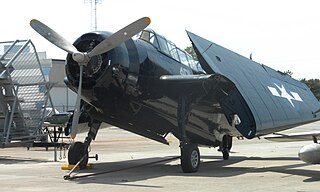 W
WGeneral Motors TBM-3E Avenger BuNo 85460 is a surviving TBF Avenger torpedo bomber located at the Naval Air Station Wildwood Aviation Museum in Lower Township, Cape May County, New Jersey, United States. The plane, a variant of the Grumman-designed Avenger, was built by General Motors in 1945 and added to the National Register of Historic Places on February 11, 2003.
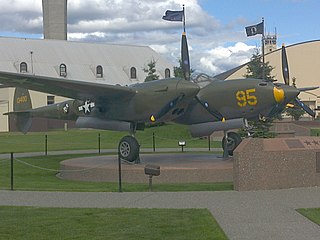 W
WThe Temnac P-38G Lightning is a historic military aircraft, now on display at Joint Base Elmendorf–Richardson. It is a Lockheed P-38 Lightning, military serial number 42-13400, which entered service in the United States Army Air Forces at what was then known as Elmendorf Field in 1942, during World War II, and was assigned to the 54th Fighter Squadron. In January 1945 it was taken out on a training mission over the western Aleutian Islands by 2d Lt. Robert Nesmith. While flying low over the Temnac River valley on Attu Island, Nesmith experienced fluctuations in one of the engines, and was forced to put the aircraft down. He crash-landed the aircraft in the valley without injury to himself.
 W
WThat's All, Brother is a Douglas C-47 Skytrain aircraft that led the formation of 800 others from which approximately 13,000 U.S. paratroopers jumped on D-Day, June 6, 1944, the beginning of the liberation of France in the last two years of World War II. After the war it was returned to the United States and sold to civilian owners, eventually falling victim to neglect until it was found in an Oshkosh, Wisconsin, boneyard in 2015, facing imminent disassembly to be converted into a modern turbine aircraft. It has since been restored and is part of the Commemorative Air Force.
 W
WThunderbird was a high mission tally Boeing B-17G Flying Fortress of the 303rd Bombardment Group during World War II. The original plane, serial number 42-38050, was scrapped at the end of the war and no longer exists. It is now represented by a mural in the WWII gallery of the National Air & Space Museum on the Mall in Washington, DC.
 W
WTop Secret was the name of a Boeing B-29 Superfortress modified to carry the atomic bomb in World War II. It served with the Army Air Forces and United States Air Force from 1945 until 1954.
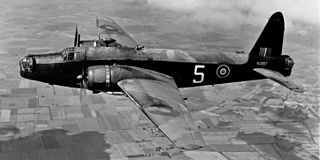 W
WVickers Wellington LN514 was a Vickers Wellington bomber built in 1943 in record time, as part of a British propaganda effort during the Second World War.
 W
WWorry Bird is a North American P-51D-25-NA Mustang currently based at the Air Combat Museum at Abraham Lincoln Capital Airport in Springfield, Illinois. The aircraft was built in 1944 and delivered to the United States Army Air Force (USAAF) in the following year to serve in World War II. At the time, the P-51D was a major component of the USAAF fleet and Worry Bird escorted Allied bombers on long-range air raids in Germany.
 W
WThe B-17 Yankee Lady is owned by the Yankee Air Force, doing business as the Yankee Air Museum (YAM), and was flown for flight experience rides and airshow appearances.